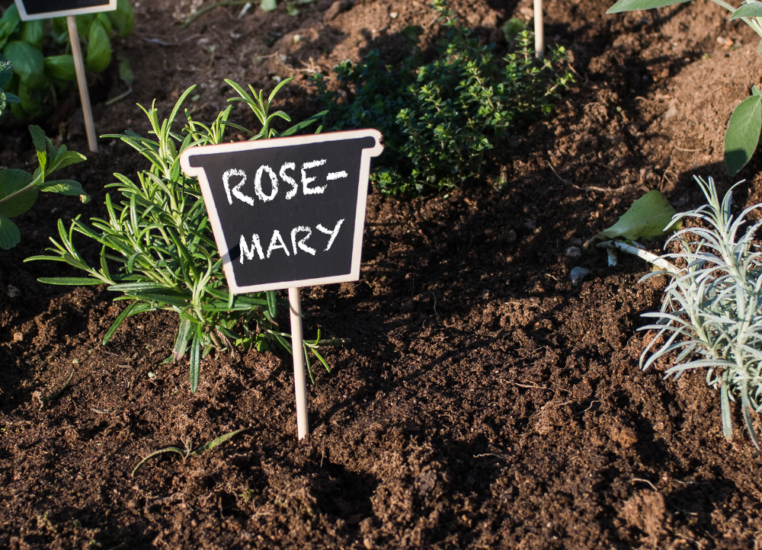If you have ever had trouble growing plants in poor soil, you’re not alone.
Many gardeners face this issue. But, with some knowledge, you can help your plants grow well, even in tough spots.
This guide offers 12 easy tips to improve soil, choose the right plants, and keep your garden healthy.
Let’s explore these simple strategies. They can greatly improve your gardening experience!
12 Tips for Successfully Growing Plants in Poor Soil
1) Selecting Resilient Plant Varieties
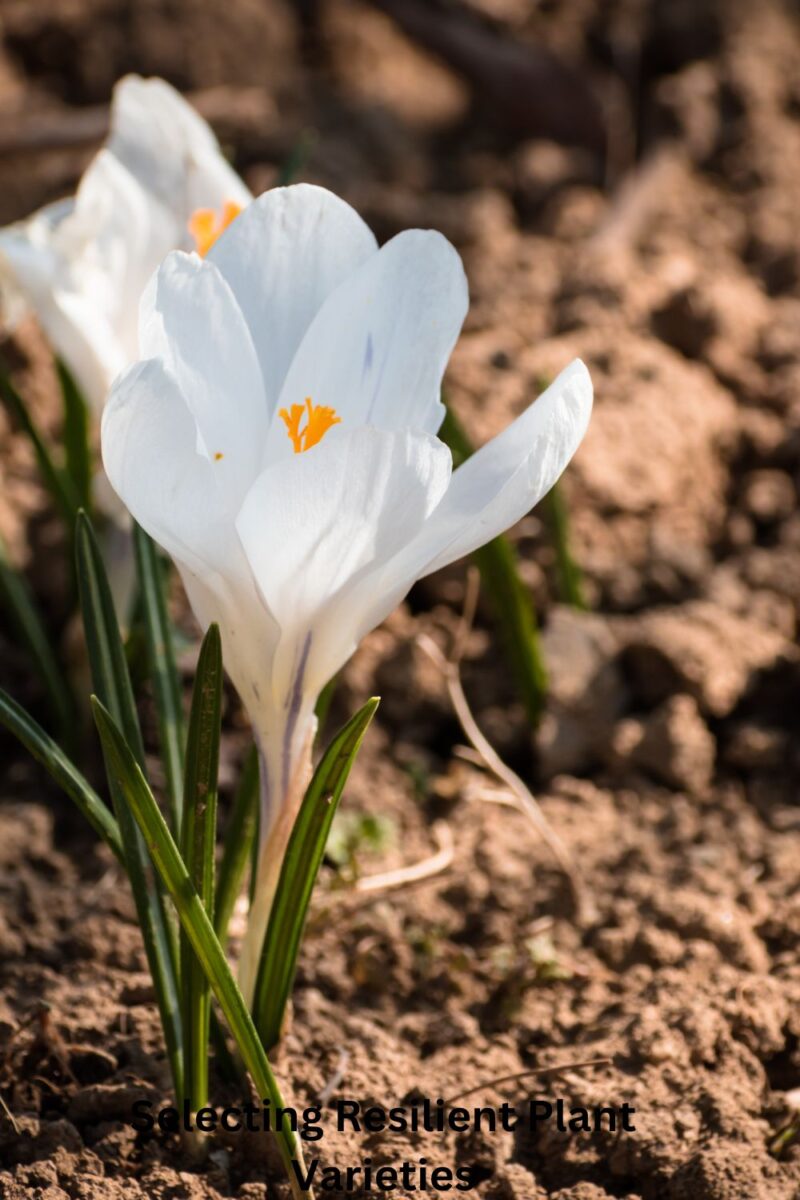
When it comes to gardening in poor soil, choosing the right plants can make all the difference.
The image illustrates a vibrant assortment of resilient plants that thrive even in less-than-ideal conditions.
Notice the varied shapes and colors; these plants not only survive but often flourish where others might struggle.
Some great choices for poor soil include succulents, certain herbs, and native plants.
These types typically have deep root systems that can reach moisture and nutrients buried beneath the surface.
Plus, they are generally more tolerant of drought and temperature fluctuations, making them ideal for challenging environments.
Implementation is key. When planting, ensure you give these resilient varieties enough space to grow.
This helps prevent competition for nutrients and light. Also, consider mixing some organic matter or compost into the soil to boost its quality, even if it’s just a little.
This can significantly enhance the growth of your chosen plants.
Maintenance is also important. Water these plants gradually, allowing the soil to dry out between waterings.
This encourages deeper root growth and helps them adapt to poor conditions. Regularly check for pests and diseases, as healthy plants are better at resisting these threats.
Following these tips will set you on the right path in your gardening journey, even if your soil isn’t the ideal type.
2). Understanding Soil Composition

Looking at the image of soil, you can see various textures and particles.
This particular soil has a mix of small rocks, dirt clumps, and some organic material scattered throughout.
Recognizing these elements is key when considering tips for growing plants.
Soil composition plays a crucial role in how well plants can thrive.
The balance of sand, silt, clay, and organic matter impacts drainage, nutrient availability, and root growth.
For instance, sandy soils drain quickly but may lack nutrients, while clay soils hold moisture but can become compacted.
To optimize poor soil, start by testing its pH and nutrient levels.
This will guide you in making adjustments.
You can also improve your soil structure by adding organic matter like compost. This not only enriches the soil but also helps with moisture retention.
When you’re ready to plant, choose species that are known to thrive in less-than-ideal conditions. Native plants and hardy perennials often do well in poorer soils.
They tend to adapt better and require less maintenance.
For ongoing care, consider mulching to suppress weeds and retain moisture.
Regularly check your soil’s condition and replenish organic matter as needed.
These simple steps are part of the 12 tips for growing plants in poor soil, and they can set you up for a successful gardening experience.
3). Practicing Crop Rotation
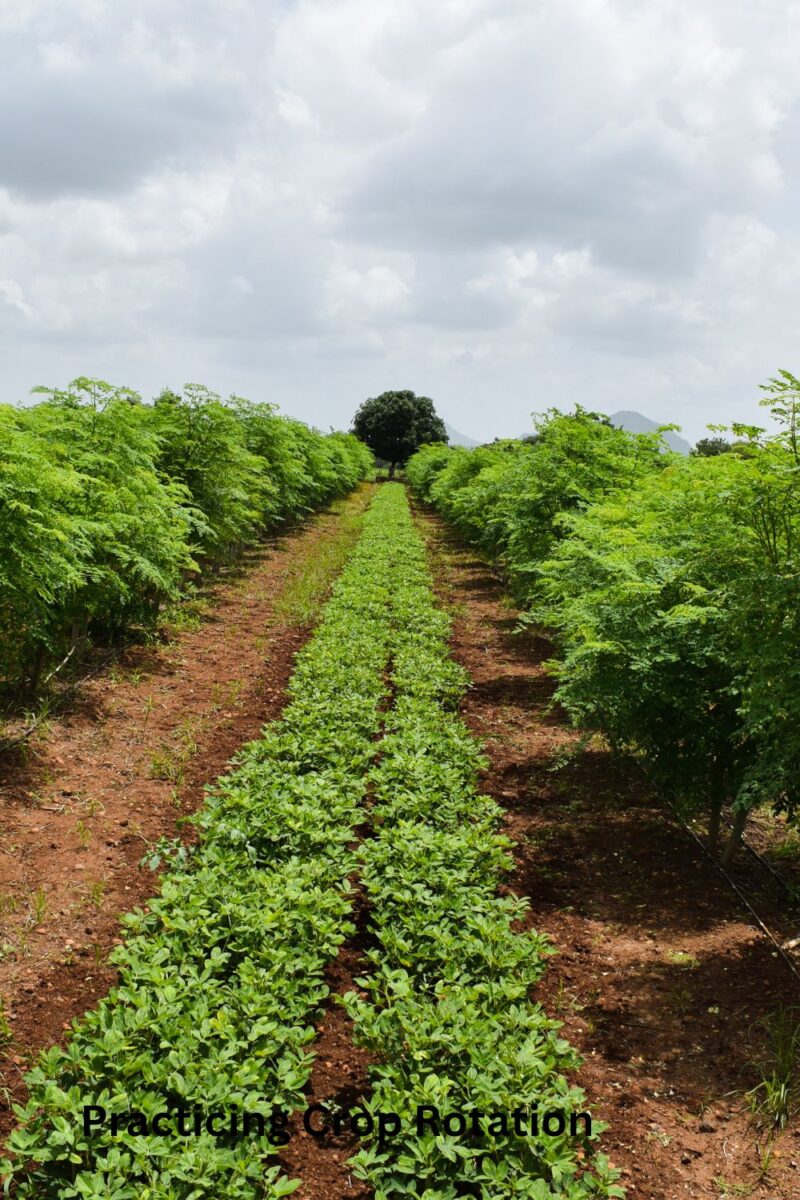
Crop rotation is a gardening technique that can really help when dealing with poor soil.
By changing the type of plants you grow in a specific area each season, you can prevent nutrient depletion and improve soil health.
The image shows a well-organized garden with various plants, which highlights the importance of diversity in planting.
When you practice crop rotation, you give your soil a chance to recover.
For example, legumes like beans can fix nitrogen in the soil, making it richer for the next crop.
This method not only enhances soil nutrients but also helps control pests and diseases that often come from planting the same crops in the same spot year after year.
To get started, plan a simple rotation schedule.
Decide which plants you want to grow and alternate them according to their families. Grouping similar plants can help you remember which ones need to be rotated.
Keep it simple! You might try planting leafy greens one season, followed by root vegetables the next.
This method is one of the effective tips for growing plants.
Maintenance is key in crop rotation. At the end of each growing season, take time to clean up the garden.
Remove any leftover plant debris, and consider adding organic matter like compost to enrich the soil.
Monitoring soil health regularly will help you see the benefits of your crop rotation plan over time.
With these practices, you’ll be well on your way to a thriving garden, even in poor soil conditions.
4). Enhancing Drainage Solutions
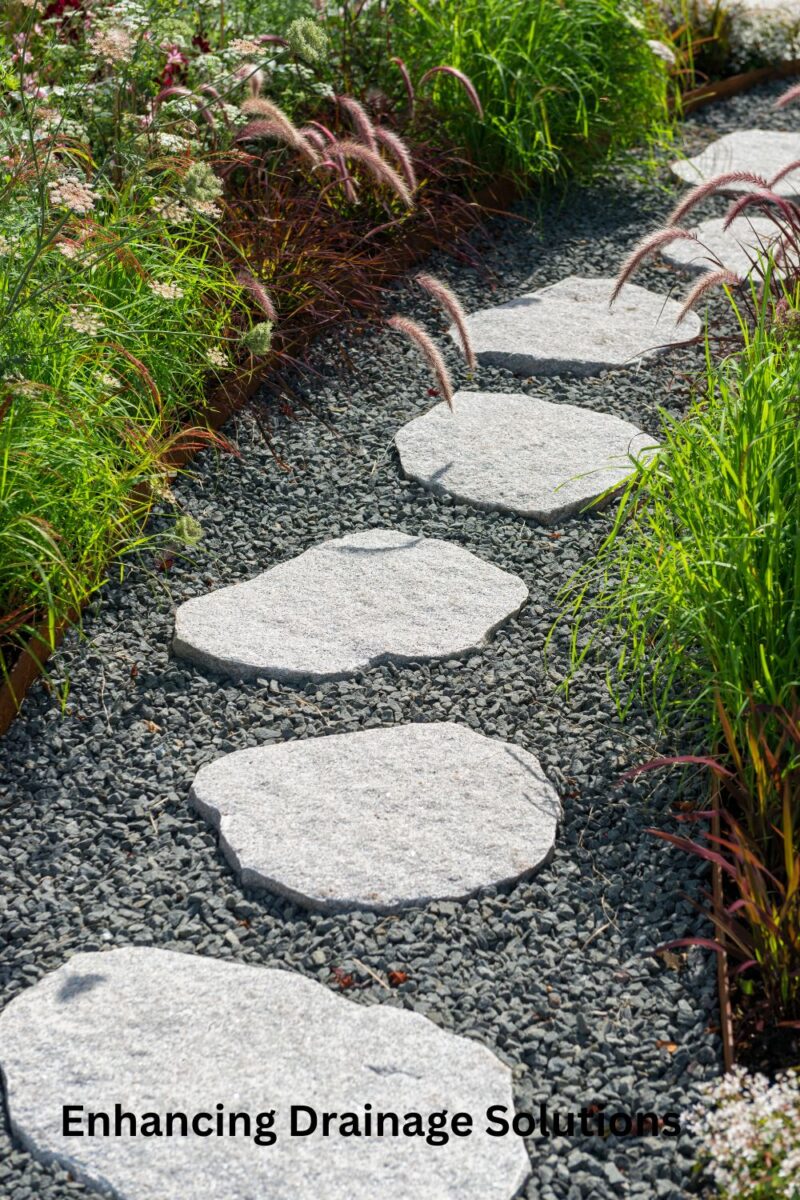
When dealing with poor soil, enhancing drainage is crucial for healthy plant growth.
The image shows a well-designed garden path made of gravel bordered by wooden posts.
This setup not only looks neat but also serves a functional purpose.
So when using materials like gravel, you can create a space that allows excess water to flow away, reducing the chances of root rot.
Incorporating elements like this in your garden is one of the practical tips for growing plants.
To implement a similar drainage solution, start by digging a channel in the affected area.
Fill it with gravel to facilitate water movement. Make sure to keep the channel clear of debris to maintain proper drainage.
Additionally, you can enhance drainage by mixing organic matter into your soil.
This can improve soil structure and encourage better water flow.
Regularly check the condition of your garden path and replenish gravel as needed to ensure it continues to function effectively.
Remember, maintaining good drainage is a key tip in the 12 tips for growing plants in poor soil.
5). Incorporating Organic Matter
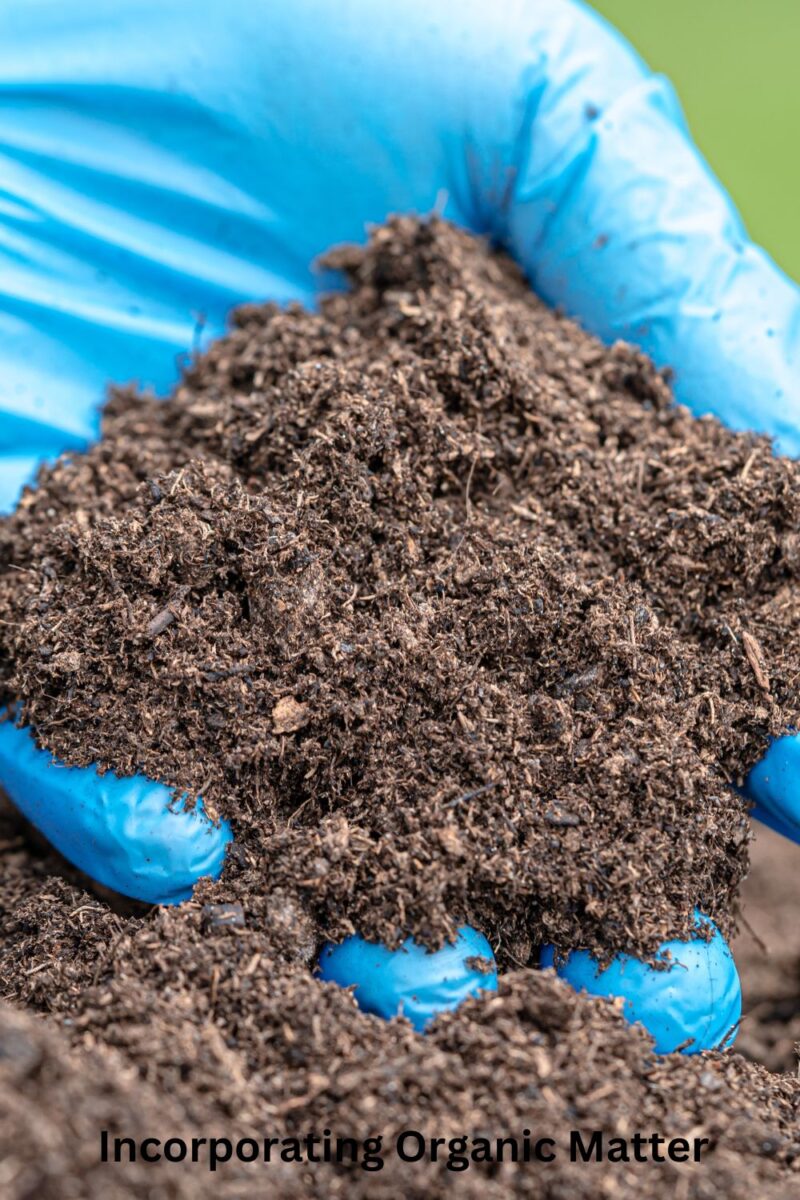
When you’re dealing with poor soil, adding organic matter is one of the best moves you can make.
The image shows someone actively working the soil, incorporating organic material that will help improve the overall quality.
This hands-on approach is essential for any gardener looking to enhance their growing conditions.
Organic matter, such as compost, leaves, and even kitchen scraps, enriches the soil by boosting nutrients and improving drainage.
It creates a more hospitable environment for your plants.
For beginners, start by mixing in compost a few inches deep into the existing soil.
This can make a noticeable difference.
Regular maintenance is key. As you continue to add organic matter over time, the soil structure will improve.
Make sure to check the moisture levels.
While organic matter helps retain water, overwatering can still be a concern.
A simple tip is to stick your finger into the soil; if it feels dry an inch down, it’s time to water.
Remember, patience is vital. Improving poor soil doesn’t happen overnight.
It takes time for organic matter to break down and integrate into the soil.
Keep applying your chosen materials every few months, and you’ll see improvement.
These steps are just part of the larger picture covered in our 12 Tips for Growing Plants in Poor Soil.
6). Employing Companion Planting Strategies
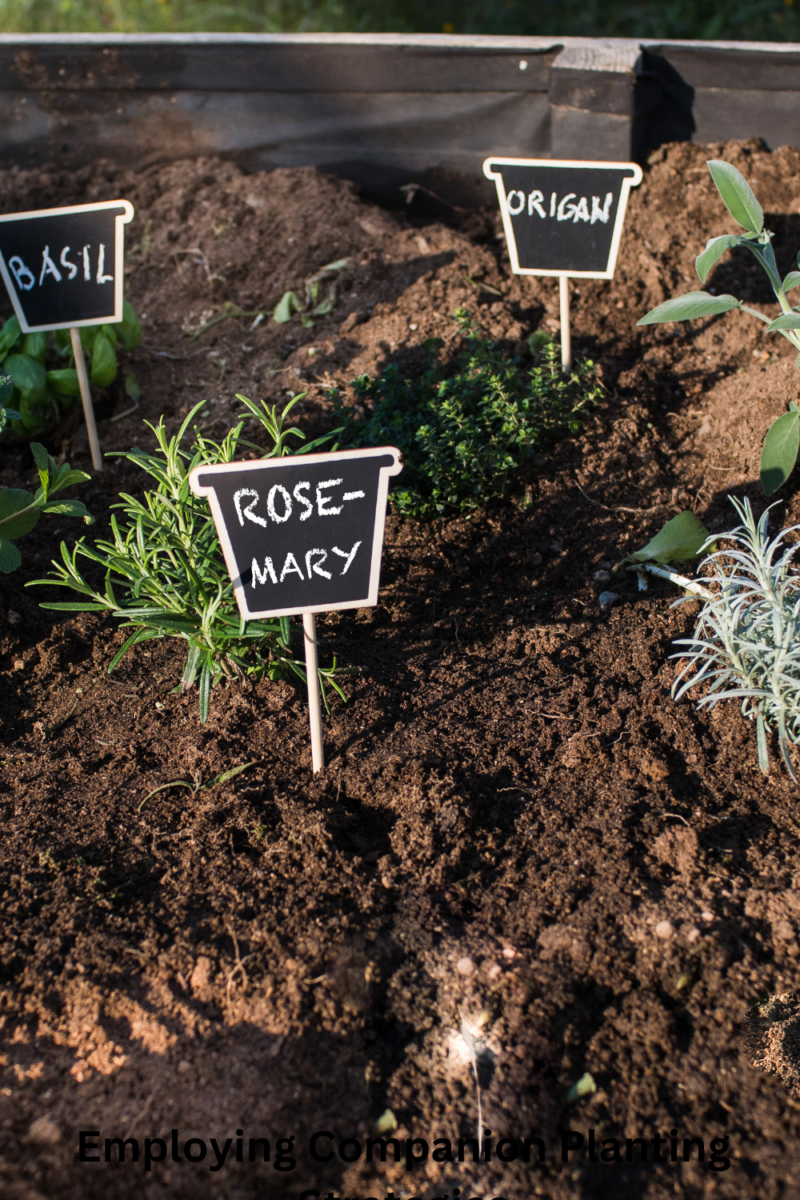
Companion planting can be a handy strategy when you’re working with poor soil.
The image showcases a vibrant array of flowers and plants, each labeled with its name.
This visual diversity represents the variety you can introduce to your garden.
When planning your garden, think about which plants will enhance each other’s growth.
For instance, planting marigolds alongside vegetables can help deter pests.
Similarly, taller plants can provide shade and protection for those that prefer a bit of cover.
This approach isn’t just functional; it can also lead to a more colorful and lively garden.
To implement companion planting, start by researching which combinations work well together.
Some plants, like tomatoes and basil, not only grow well side by side but can also enhance each other’s flavor.
Once you have your combinations, prepare your garden layout.
Place plants with similar needs close together to simplify watering and maintenance.
For ongoing maintenance, keep an eye on how each plant interacts.
If you notice any that aren’t thriving together, don’t hesitate to rearrange them.
Remember, gardening is a process of trial and error. Embrace the journey and enjoy watching your garden transform.
7). Implementing Mulching Techniques
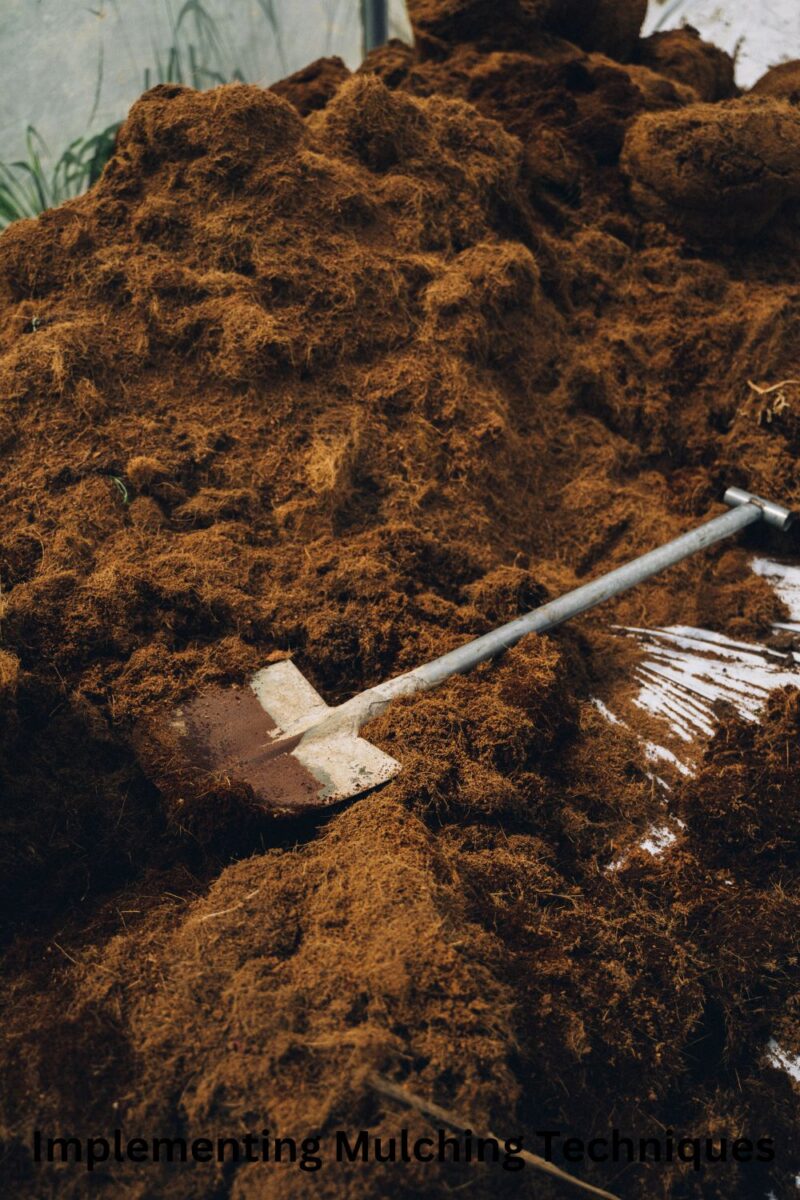
Mulching is a simple but effective technique to enhance your gardening experience, especially when dealing with poor soil.
The image above shows a patch of soil covered with straw, which is a common mulching material.
Using mulch helps retain moisture, suppress weeds, and improve soil structure over time.
To get started with mulching, first, choose the right material.
You can use organic materials like straw, grass clippings, or shredded leaves.
These not only add nutrients back into the soil as they decompose but also help in creating a healthy ecosystem for beneficial organisms.
When applying mulch, spread it evenly around your plants, ensuring you leave some space around the stems to prevent rot.
Aim for a thickness of about 2 to 4 inches.
This will help maintain soil temperature and moisture levels. Remember, mulching is not a one-time task. Regularly check the mulch layer and replenish it as needed.
For maintenance, keep an eye on the moisture levels in the soil beneath the mulch.
On hot days, you may need to water more frequently.
Additionally, if you notice any weed growth, pull them out gently, as they can compete with your plants for nutrients.
Incorporating these tips into your gardening routine is part of our broader list of ’12 Tips for Growing Plants in Poor Soil’.
With a bit of effort and the right techniques, you can create a thriving garden even in challenging conditions.
8). Utilizing Raised Garden Beds
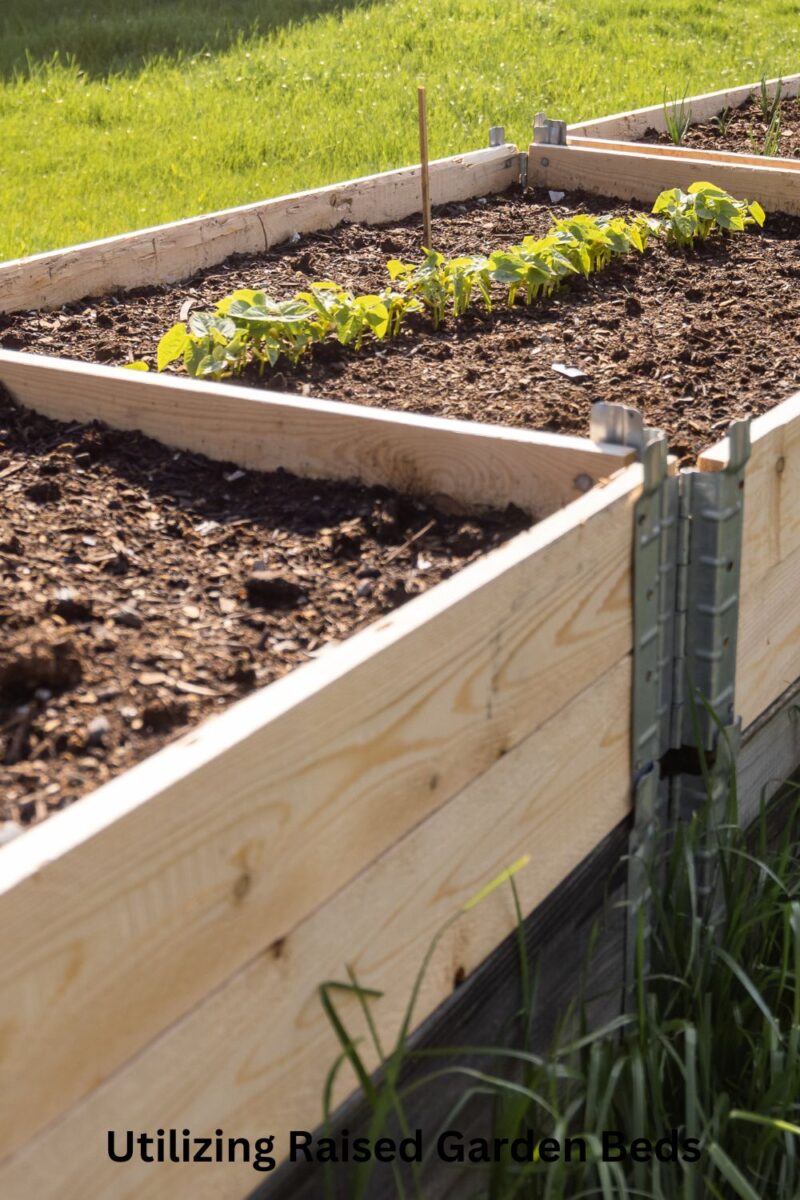
Raised garden beds are a smart solution when dealing with poor soil conditions. The image captures a beautiful raised bed filled with lush green plants and vibrant flowers. These beds not only look inviting but also provide an accessible way to grow a variety of plants.
One of the biggest advantages of raised beds is that they allow you to control the soil quality. You can fill them with a rich, well-draining mix of soil, compost, and organic matter. This customized mix creates an ideal environment for your plants to thrive, especially if your garden’s native soil is lacking.
When setting up your raised bed, choose a sunny location. Most plants need at least six hours of sunlight daily. The height of the bed is also important; aim for 12 to 24 inches deep. This depth gives roots enough room to grow while also making it easier to work on the plants.
For maintenance, ensure that you water regularly, especially during dry spells. Raised beds tend to dry out faster than in-ground gardens. Adding a layer of mulch can help retain moisture and reduce weeds. Additionally, consider rotating your crops each season to prevent soil depletion and pest buildup.
Incorporating these tips can significantly enhance your gardening experience. Raised beds not only help you grow healthy plants but also make gardening more enjoyable. So, as you explore these 12 tips for growing plants in poor soil, remember that raised beds can be a wonderful addition to your garden setup!
9). Watering Wisely to Conserve Moisture

Watering is a crucial aspect when it comes to growing plants, especially in poor soil. The image shows a watering can pouring water over young plants. This visual captures the importance of providing adequate moisture while being mindful of conservation.
When watering, aim to do so early in the morning or late in the evening to reduce evaporation.
Using a watering can, like the one in the image, allows for targeted watering, which is especially handy when dealing with limited water resources. It’s one of the key tips for growing plants effectively.
Consider using mulch around your plants. This helps retain moisture and keeps the soil temperature consistent.
A layer of organic material, such as straw or wood chips, will not only conserve water but also improve soil quality over time.
Another tip is to check the soil moisture before watering.
Stick your finger about an inch into the soil.
If it feels dry, it’s time to water. This simple method prevents over-watering, which can be just as harmful as under-watering.
Implementing drip irrigation or soaker hoses can also be a great way to conserve moisture. These systems deliver water directly to the plant roots, minimizing waste and ensuring that the plants receive what they need.
Maintaining a consistent watering schedule is essential too. Drought-stressed plants can suffer long-term damage. Keeping a regular routine helps plants thrive even in poor soil conditions.
Remember, the goal is not only to water our plants but to do it wisely. By following these tips and maintaining good watering practices, you can improve your success in growing plants in poor soil.
10). Regular Soil Testing
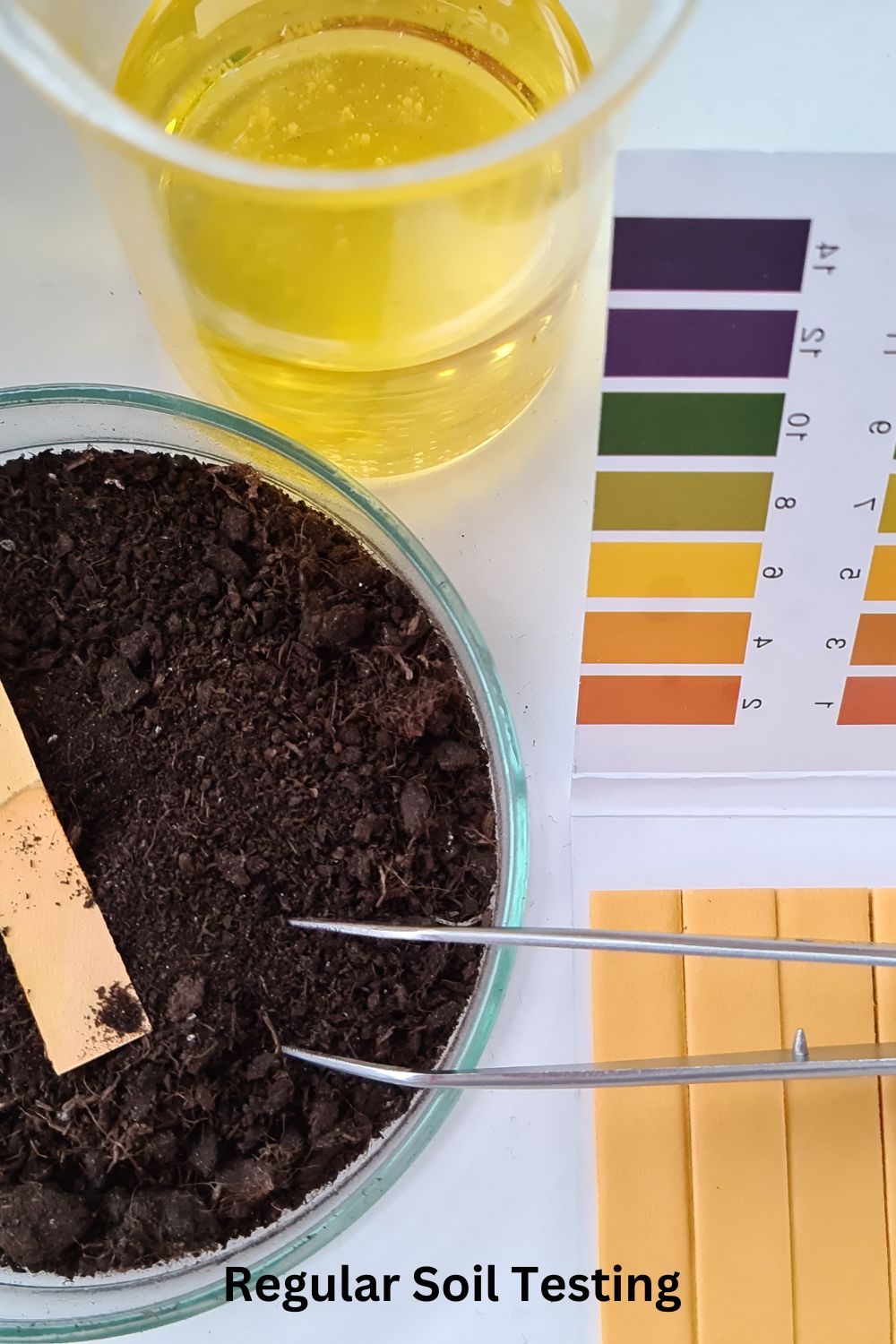
Soil testing is a key part of any gardening strategy, especially when you’re dealing with poor soil.
The image shows an individual using a pH meter to measure soil conditions in various pots of plants.
This simple tool can reveal a lot about your soil’s health and nutrient levels.
One of the first tips for growing plants in poor soil is to understand what you’re working with.
Regular soil testing helps you identify the pH level, nutrient deficiencies, and organic matter content.
Knowing these factors can dramatically increase your chances of growing healthy plants.
After testing, you’ll have a clearer picture of what amendments are necessary.
For example, if your soil is too acidic, you may want to add lime. If it’s lacking nutrients, consider organic fertilizers or compost.
Incorporating these amendments based on your soil test results ensures your plants have the right environment to thrive.
For ongoing maintenance, consider testing your soil at least once a year. This allows you to track changes and adjust your amendments as needed. Make it a fun routine! Invite friends or family to join you, turning it into a small gardening day.
In summary, regular soil testing is an essential tip for growing plants in poor soil. It not only helps you make informed decisions about amendments but also keeps you engaged in the health of your garden.
11). Applying Slow-Release Fertilizers
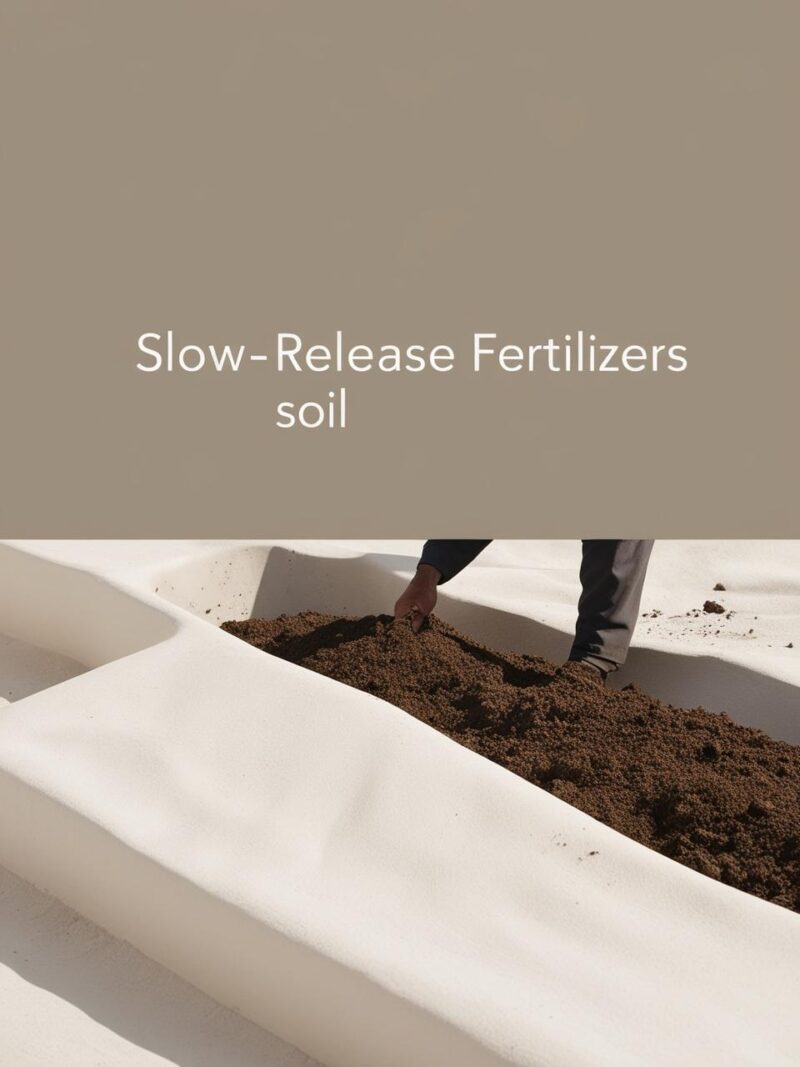
When you’re working with poor soil, applying slow-release fertilizers can be a real boost for your plants.
The image shows someone gently sprinkling small fertilizer granules over young plants, a simple yet effective way to ensure they get the nutrients they need.
Slow-release fertilizers gradually release nutrients into the soil, which means your plants have a steady supply over time.
This method reduces the risk of over-fertilization, which can harm plants in less-than-ideal soil conditions. Plus, it’s super handy because you don’t have to apply it as often as quick-release options.
For implementation, start by choosing a slow-release fertilizer that suits the specific needs of your plants.
Look for one that contains balanced nutrients—nitrogen, phosphorus, and potassium ideal for promoting healthy growth.
Follow the package instructions for the right amount to use, as this can vary depending on the fertilizer type.
Maintenance is key! Regularly check the plants for any signs of nutrient deficiency, like yellowing leaves or stunted growth.
If you notice any issues, you might need to reapply the fertilizer sooner than expected.
Keep the soil moist but not soggy, as proper watering helps the fertilizer break down and release nutrients efficiently.
These tips for growing plants in poor soil will help ensure your garden thrives.
Remember, patience pays off. Gradually, you’ll see your plants flourish with the right care and attention!
12). Creating Windbreaks for Protection

Creating windbreaks is an important step when using the 12 Tips for Growing Plants in Poor Soil.
The image shows a beautifully arranged garden with a variety of plants, including shrubs and ornamental grasses.
These windbreaks not only add visual interest but also protect your plants from harsh winds.
To effectively create a windbreak, consider planting a row of taller shrubs or trees on the exposed side of your garden.
This helps to shield your delicate plants from cold gusts and can reduce evaporation, keeping the soil moist. Choose native species that thrive in your climate for the best results.
Maintenance is key! Regularly check for any dead or damaged branches and prune them as needed.
This will keep your windbreak healthy and effective. Additionally, watering your windbreak plants will ensure they grow strong, providing better protection for your garden.
Remember, a windbreak doesn’t have to be a solid wall.
Mixing different heights and types of plants can create a more natural look while still serving the purpose of shielding your garden.
With these tips for implementation and maintenance, you’ll enhance your gardening efforts and support your plants in thriving even in poor soil.

